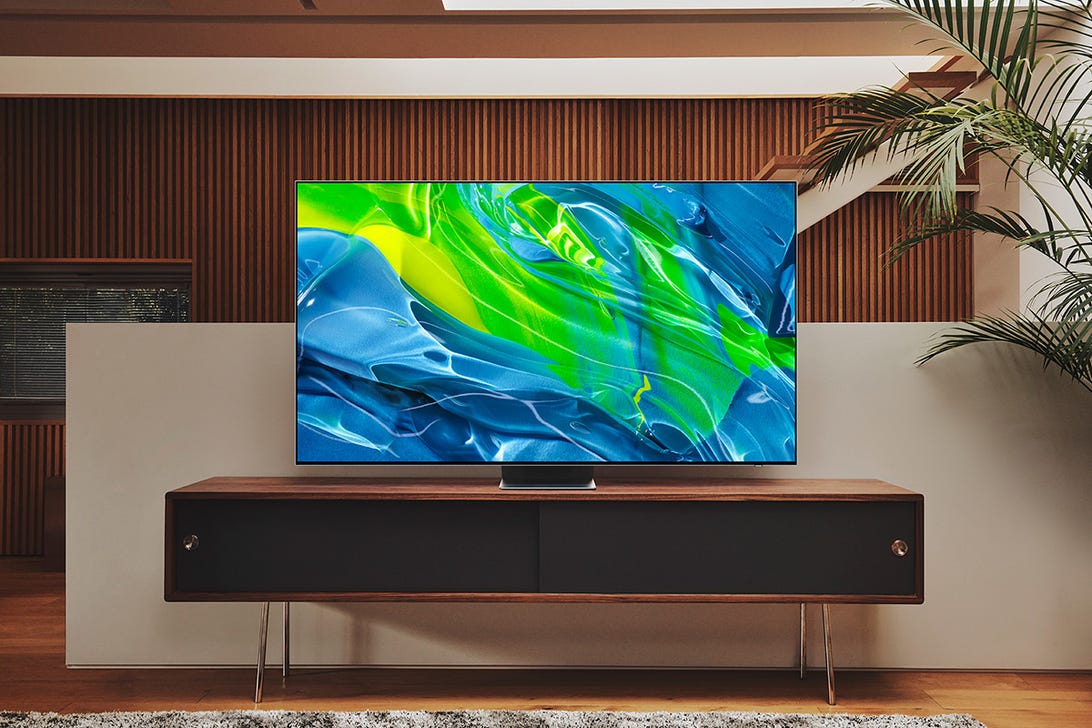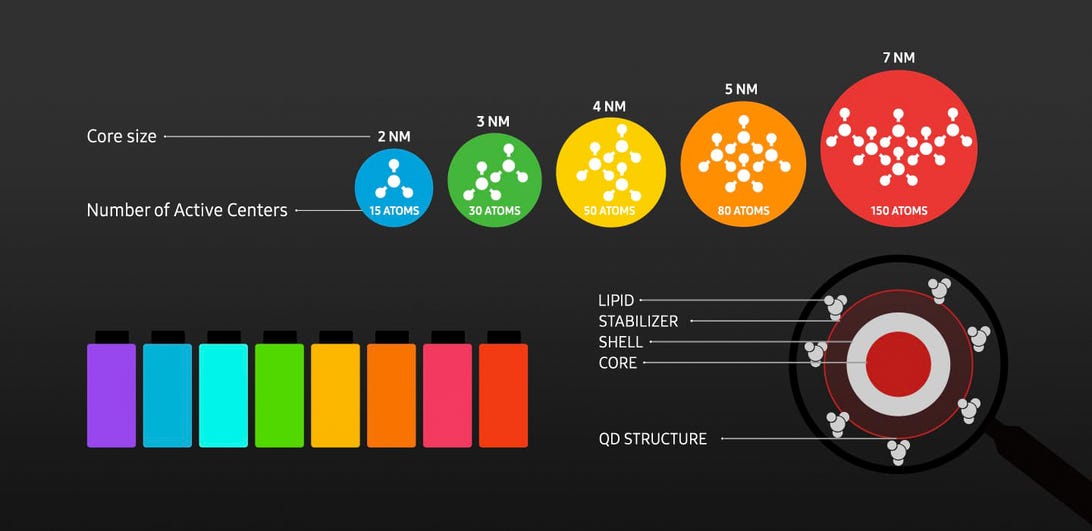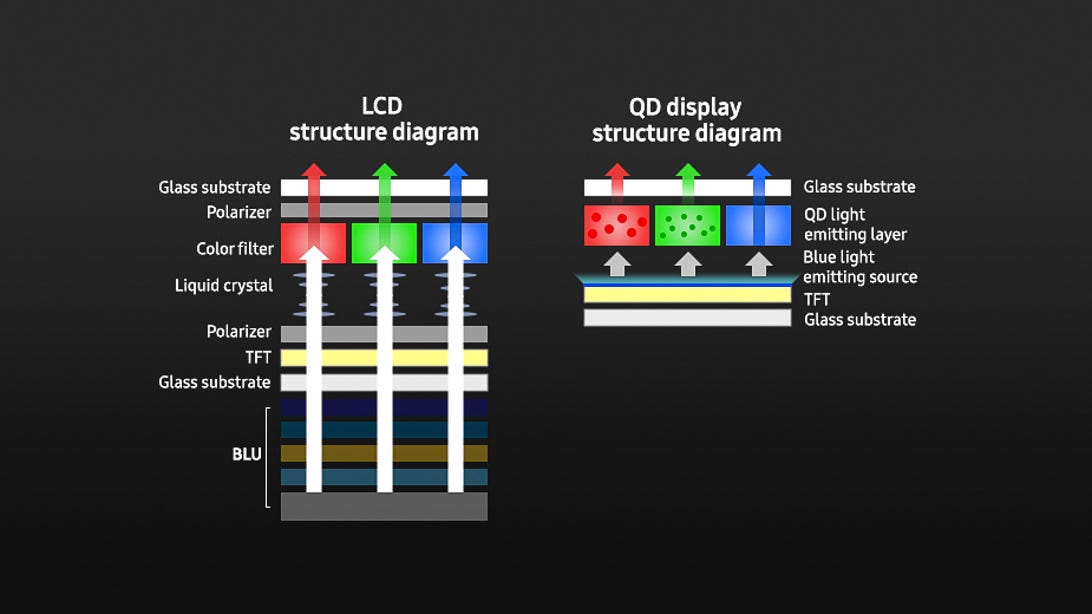

The Samsung QS95B OLED TV has an all-new QD-OLED panel and goes on sale in April, starting at $2,200 for the 55-inch size.
SamsungOLED TVs are among the best TVs you can buy, and for the last nine years, LG Display has been the sole producer of every OLED television on the market. That is, until this year. In 2022, there will finally be a new kind of OLED TV technology, called QD-OLED. The technology will be seen in new 55-inch and 65-inch TVs from Samsung and Sony, as well as a new monitor by Alienware. QD-OLED uses quantum dots in combination with organic light-emitting diodes, and it promises even better picture quality than traditional OLED TVs and monitors.
We already reviewed the Alienware monitor and liked it a lot, but the we haven't had the chance to see the TVs beyond brief, early demos of prototype products. Samsung's QD-OLED TV, the QS95B, is priced at $2,200 for the 55-inch and $3,000 for the 65-inch model, which aren't terrible prices for a new display technology and are exactly the same as LG's best 2022 OLED TV, the G2 series. Sony has yet to announce pricing, and of course we won't know how these QD-OLED models really compare against LG and other conventional OLED TVs until we can test them in person. But initially they look promising.
So what is QD-OLED, and why is it potentially better than traditional OLED and LED LCD? Read on to find out.
Today's TV tech: LCD, OLED and QLED
Right now there are two technologies most TV buyers can actually afford: LCD and OLED. LCD TVs are sometimes called "LED TVs" due to the tiny LEDs they use to create light. The image is created by a liquid crystal layer, just like LCD TVs from 20-plus years ago. Mini-LED TVs operate the same way, just with more LEDs in their backlights, while QLED TVs are basically LED LCD TVs with quantum dots.

The size of the quantum dot determines what color it emits when supplied with energy. Currently that energy is supplied by blue LEDs or blue OLEDs.
SamsungOLED is a newer technology. Each pixel emits its own light, created by a substance that glows when you give it energy. This substance includes the element carbon, hence the "organic" moniker. Since they're able to turn individual pixels off, to a perfect black, their contrast ratio and overall picture quality are typically better than any LCD.
One of the biggest improvements in LCD TV tech over the last few years is the inclusion of quantum dots. These microscopic spheres glow a specific color when excited by light. In the case of LCD TVs, blue LEDs supply all the blue light plus the energy to get red and green quantum dots to emit red and green light. This is what allows LCD TVs to have such extreme brightness and better color than LCD TVs of old.

The many layers of LCD (left) compared with the relatively few layers required by QD-Display (right). Among other benefits, even thinner TVs are possible.
SamsungYou can read more about the differences between these technologies in our comparison of LCD and OLED TV display technologies, but the short version is that LCD-based TVs tend to be brighter, while OLED TVs have better overall picture quality. There's also microLED, but microLED TVs are currently wall-size and absurdly expensive. They're not really competition for LCD, OLED or QD-OLED TVs, and likely won't be for the foreseeable future.
The layers required to make an image with different TV technologies. With LCD, the light and the image are created separately. With WOLED (LG's current tech), the "white" layer is actually blue and yellow. Color filters create red and green.
With Samsung's new QD-OLED, only blue OLED material is used, with red and green created by quantum dots. (Click to enlarge)
Samsung








 Add Category
Add Category